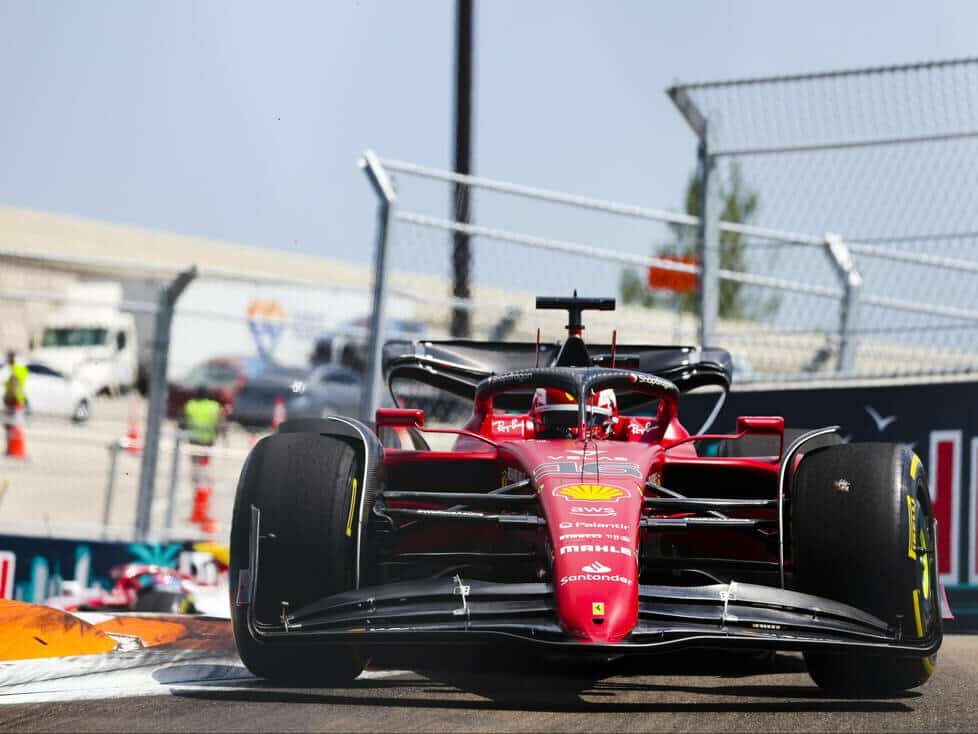FIA safety regulations could complicate a possible rebuild of the Miami Formula One circuit’s narrow second sector
Multiple Formula One drivers have called for the Miami International Autodrome’s narrow chicane to be changed for next year, but a revamp would not be easy due to the passage’s geographical location.
This is because the placement of the chicane and the tight sequence of corners around it were almost forced on the organisers due to its location under the Turnpike road bridges. FIA regulations regarding the distance between the overpasses and the track surface meant that the track had to dip under the two overpasses.
Race winner Max Verstappen commented after the Florida race, “I think if I had been in a go-kart it would have been a nice chicane, but not in a Formula One car like we have at the moment. “
Second-placed Charles Leclerc added: “I think I’m the only driver on the grid who really liked that chicane. I honestly enjoyed it.”
“On the other hand, I agree that we can do a bit better for racing because it was not easy to follow in that part. Also for the visibility was quite difficult when you have a car in front of you because you have to be so precise on the kerbs. “
Track designer explains the reason for the chicane
Andrew Wallis, the lead designer for the Apex Circuit design team that designed the Miami track, stressed before the race that “this whole sequence was a real engineering challenge. “
“In order for us to pass under the first overpass, we had to comply with the FIA regulation which stipulates a minimum distance of four metres. But because we have to tie in with the level of the motorway slip road, which has a transverse gradient of seven per cent, our pavement rose at exactly the point where it was supposed to fall,” he explains.
“There’s also a Formula One regulation about the rate of grade change, so this design basically threads the needle in three dimensions to make sure the cars go slow enough to adjust to the camber of the intersection and then come back under the flyover. “
Chicane was “necessary evil “
For these geographical reasons, the chicane had to have a minimum speed of 80 km/h to comply with the regulations. In addition, the lack of visibility resulted from the blind crest.
Tom Garfinkel, managing partner of the Miami Grand Prix, says that perhaps the organisers could have done a better job of communicating why the chicane was designed the way it was.
“I think the challenge with the chicane is that we didn’t communicate well enough why it existed and where it existed,” he says. “It was a necessary evil, if you like, to make the track big enough for the rest of the circuit to be great. “
Organisers want improvements for 2023
“That’s one area where it’s tricky because we really have to slow the riders down there because we don’t have enough run-off.” However, Garfinkel confirms that the organisers will look at what they can do better in the future.
Asked how the Miami Grand Prix promoter plans to improve the event in the future, COO Tyler Epp replied, “The biggest challenge last year was the tight schedule, so we’re going to get to work right away and try to make decisions for next year as early as possible. “
“Over the course of the weekend, we gathered information and feedback from Formula 1, the FIA, drivers and teams, as well as customers and fans. Over the coming weeks we will be engaging with them on any issues they feel can be improved.”
“We have internal meetings this week and next week to recap everything and see where we need to make changes to improve. “





